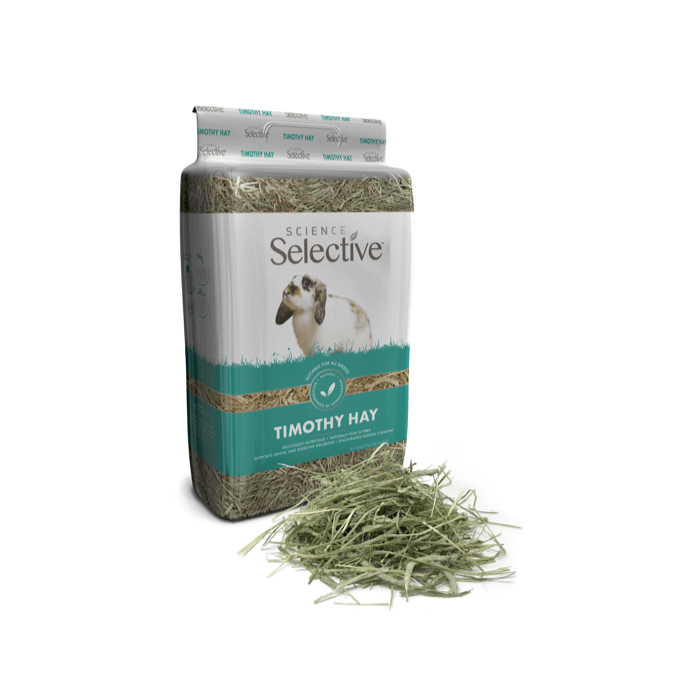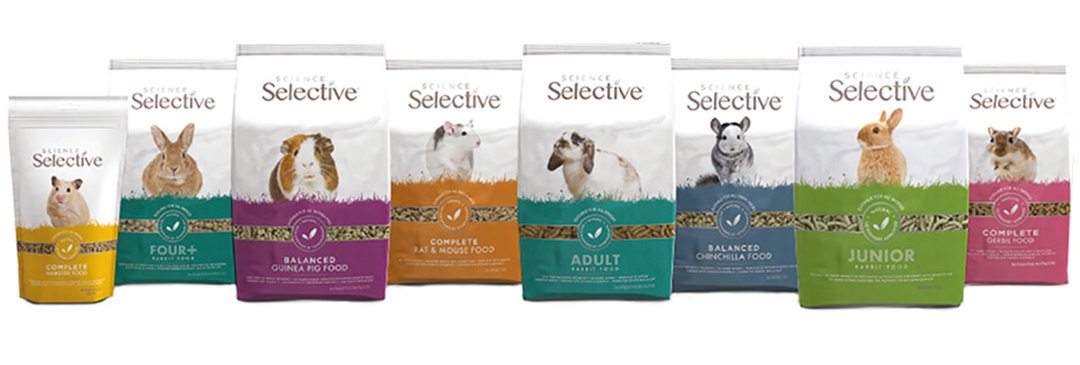Rabbit teeth – how to keep them healthy!
Rabbits and their herbivore friends have specialised teeth to munch away on a diet of vegetation. If these creatures don’t get enough plant fibre in their diet, they can develop problems with their teeth that can make them very ill. Read on to find out what’s different about herbivore teeth, learn the risks of dental disease and discover how best to prevent it.
What makes rabbit teeth so special?
We have teeth that don’t change in size or shape, and these are great for eating up our human food. But small herbivores like rabbits, guinea pigs, chinchillas and degus must eat lots of fibrous vegetation all day, and so they need a different type of teeth to deal with all that chewing. These teeth don’t have a distinct root like ours do, and they continually grow at a rate of about 2 mm per week! The idea is that the teeth keep growing in order to make up for the tough fibre wearing them down.
Continually growing teeth brings its own challenges though – it means that herbivores rely on their teeth being worn down constantly and evenly. If this doesn’t happen, their teeth can become overgrown and misaligned.
What happens when rabbit teeth are overgrown?
Overgrown teeth can be very painful for small herbivores like rabbits. If the incisors grow too long or in the wrong direction, they can press on the lips or gums. If the cheek teeth aren’t worn down properly, they can develop sharp points or ‘spurs’ which create ulcers on the cheeks and tongue.
Rabbits with overgrown teeth can also go off their food – firstly because of the pain, and secondly because the teeth aren’t able to chew so effectively. This lack of appetite can be very dangerous for bunnies and their herbivore friends. Their delicate digestive systems require a continual input of food, and if they don’t eat for even a short time, the consequences can be life-threatening.
Unfortunately, appetite loss can turn the whole situation into a vicious cycle. Stopping eating means the teeth will be worn down even less, which makes the dental problems more severe and the poorly pet even less likely to eat. Ultimately, furry friends in this downward spiral will need veterinary help and lots of supportive love and care to help them recover. Given how serious dental disease can be, it’s important to try and stop your pet getting into this situation.
How can we prevent tooth problems in rabbits and other small herbivores?
Dental disease is sometimes present from birth, but more often it develops because the teeth aren’t being worn down properly – either because the diet isn’t right or because the pet stops eating it. This means you can go a long way to prevent dental problems by just choosing the right diet and checking that your furry friend keeps munching away!
So, what’s the best diet for dental health? Since herbivore teeth are meant to continually chew on high-fibre food such as grass, it follows that most of the diet should consist of this kind of material. We recommend that about 80% of the diet should be hay or grass – this is easy to measure out as it works out as a body-sized portion of hay per day.

There are lots of different types of hay to choose from, and they aren’t all the same quality. Depending on the variety of grass and the time of harvesting, the nutritional content can vary quite widely. In general, Meadow hay such as our Russel Rabbit Tasty Hay or Timothy hay like our Science Selective Timothy Hay are the healthiest options, and these products are as nutritious as they are delicious!

As well as hay, herbivores will need a handful of suitable veggies and a measured portion of species-specific pet food per day. To support dental health as much as possible, this food should also contain lots of fibre. Our Science Selective rangehas a high fibre content and allows a bigger portion size per calorie compared to other foods, allowing for more chewing to keep the teeth nice and healthy.

Looking out for the signs of dental disease in rabbits and other herbivores
Prevention is better than cure, but some pets will develop dental disease despite our best efforts. If this happens, catching the problems quickly is the best way to ensure a speedy recovery.
It can be easy to spot if the incisor teeth at the front of the mouth are overgrown, but you won’t be able to see problems with the cheek teeth. So, as well as looking at the teeth, you’ll want to keep an eye out for the following signs of rabbit dental disease:
- Drooling – your pet may develop a wet chin or they may lose some fur in this area. Rabbits with tooth problems often end up with wetness or saliva staining on their forelimbs from where they’ve been grooming away the excess moisture
- Difficulty eating – your furry friend may look distressed while they’re trying to eat, and might drop their food. Sometimes, they may go up to the food bowl and then have second thoughts about the idea
- Change in food preferences – rabbits who develop spurs on their cheek teeth may find side-to-side jaw motions uncomfortable, meaning they’ll go off their hay and veggies before their pellets
- Reduced appetite – this can be dangerous because of the risk of gastrointestinal stasis, a severe condition which could make your pet very unwell in themselves
- Weight loss
- Masses around the jaw area – abscesses can sometimes develop with bad dental disease
- Flystrike – this is a risk where the skin is wet and damaged from drooling
If you notice any of these signs, take your furry friend to the vet for a check-up. Your vet will be able to check your pet’s teeth and give them any treatment necessary.
We hope you’ve found this a useful guide to dental disease in rabbits and their herbivore friends! The take-home message is that a good diet is super important to stop dental problems cropping up. Lots of hay, some veg and a high-quality pet food will keep your herbivore pal healthy and happy.









